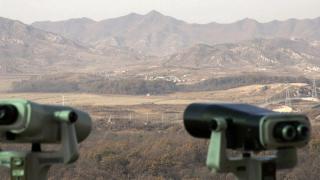Following the presidential election, then President Obama warned the incoming commander-in-chief that North Korea should be at the top of his to-do list. Obama’s policy of ‘strategic patience’ had run its course. Since coming to power, Kim Jung-un has raced ahead with developing a nuclear capability, testing two nuclear devices in 2016 alone. Many analysts also concluded that North Korea would attempt to test the new president’s often bellicose rhetoric shortly after he was sworn in. Over the weekend Pyongyang did exactly this, timing the launch of a new missile to coincide with the visit of Japanese Prime Minister Shinzo Abe.
What is being somewhat lost among the swirl of analysis and commentary over the test – and Trump’s short and rather strange statement alongside Abe condemning the launch – is that it appears North Korea has made another significant advance up the missile technology tree. The new missile Pyongyang tested was solid-fuelled, meaning it can be launched in minutes if necessary and is far more reliable than liquid-fuelled models. Longer-ranged North Korean solid-fuelled missiles could change the military dynamics on the peninsula and throughout the region. They also increase the risk of a miscalculation on either side.
Secretary of Defense Mattis’ visit to Asia earlier this month coincided with reports that the Trump Administration has launched a review of North Korean policy. The North’s advances in solid-fuelled missiles will make any potential military options more difficult. Secretary of State Tillerson has flagged the possibility of “secondary sanctions” on Chinese companies that are violating UN Security Council resolutions imposed last year in an effort to compel Beijing to bring these companies into line. This may work, but it is likely these efforts will not be fast enough – it can take several years for sanctions to take effect.
That leaves diplomacy. Even Trump knows that China is crucial in bringing North Korea to the table. While Trump’s recent backdown regarding the ‘One China policy’ is a signal to some that he intends to pursue a more normalised relationship with Beijing, there is still a sentiment across the administration (including in the Department of Defense and the State Department) that the United States needs to take a harder line with China. These two objectives - formulating a workable policy towards North Korea and ramping up pressure on China – are at present incompatible. We have yet to see what Trump’s priority will be in Asia.






